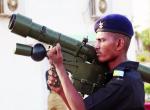The new strategic guidance for the US Department of Defence, issued on January 5th 2012, in an eight page document entitled “Sustaining US Leadership: Priorities for 21th Century Defense”, merits careful study. It not only provides insights into the emerging global security challenges as envisaged by the US and its projected response thereto but also enumerates the primary missions for the US Armed Forces.It may be recalled that the last occasion on which a similar document was prepared was in 1992, in the aftermath of the Gulf War. At that time it was initially a secret document. As per leaks to the media it contemplated preemptive intervention, unilateral action and promotion of American values. Subsequently, a modified and toned down version was released to the public.
As regards the new strategic guidance there was much debate in the Obama Administration on whether or not to make it public. The forthcoming elections were, perhaps, an element which impelled the Administration to place its essence in the public domain. It would be safe to assume that there is a more detailed version of this guidance which remains classified.
The document at the very outset acknowledges that it has been developed at an inflection point which marks the drawdown of the extended operations in Iraq and Afghanistan, is witnessing a changing geopolitical environment which is throwing up newer challenges and is impelling lower levels of defence spending.
Clearly, while US Defence Forces are set to become smaller in response to the reduction in defence spending dictated by economic constraints, the strategic guidance valiantly seeks to project that they will be better fitted to meet the emerging challenge. Indeed, the President in his transmittal message on the issue was at pains to point out that the US military would be “agile, flexible, and ready for the full range of contingencies” and would be the “best trained, best equipped fighting force in history.”
Global Security Challenges:
The section of the document on the global security environment is upfront in acknowledging that the US is faced with a complex set of challenges and opportunities across regions and on issues and sets out the manner in which it should address them. The following is the broad approach recommended in respect of the challenges posed by the major issues and in some of the regions:
- Terrorism: Notwithstanding the fact that Al-Qaeda has been rendered “far less capable” the document recognizes that it, along with its affiliates, continues to remain active in Pakistan, Afghanistan, Somalia, Yemen and elsewhere. It, furthermore, asserts that violent extremists will continue to threaten the US and the “primary loci of these threats are South Asia and the Middle East.” Accordingly, for the foreseeable future that US will “take an active approach in countering these threats” by monitoring the activities of non state threats worldwide, working with allies and partners to establish control over ungoverned territories and “directly striking the most dangerous groups and individuals” when necessary.
(Comment: It is evident, that the US does not discount further terrorist attacks against it and is prepared to resort to preemptive action abroad against them if necessary; The Defence Policy Guidance of 1992 also contemplated preemptive action but it was more in the context of conventional targets rather than terrorist outfits. Unfortunately, though the US recognizes that Al-Qaeda and its affiliates will continue to remain active in Pakistan it stops short of suggesting that the latter has been active in the promotion of terrorism and, therefore, must be dealt with sternly.)
- Asia-Pacific: Since US economic and security interests are “inextricably” linked to the Asia-Pacific the document projects that the US will “rebalance” towards it. Existing alliances in the region will be emphasized and networks of cooperation will be expanded with emerging partners in the region “for securing common interests.” The US is investing in a long term strategic partnership with India “to support its ability to serve as a regional economic anchor and provider of security” in the Indian Ocean region. The US would maintain peace in the Korean Peninsula and deter and defend provocation from North Korea. Peace, stability, the free flow of commerce, and of US influence in the region will depend in part on an “underlying balance of military capability and presence”. China has the potential to affect the US economy and security. The growth of China’s military power must be accompanied by greater clarity of its strategic intent. The US will make the necessary investments to ensure it maintains regional access. It will work with its allies and partners to promote a rules-based international order that ensures stability and encourages the peaceful rise of new powers, economic dynamism and constructive defense cooperation.
(Comment: The US intent to seek to contain China comes through loud and clear. It will do so by enhancing its presence in the region and working through alliances and partnerships including new ones in the Asia-Pacific. The mention of India’s role as a regional economic anchor and provider of security is welcome and an indicator that it is envisaged as one of the partners of the US in the region. In contrast in the 1992US defence policy guidance India’s large army along with that of China, Vietnam and the two Koreas were pointed out indirectly as the reasons for maintaining the US armed forces presence in East Asia/Pacific. India and Pakistan were then being clubbed together and their nuclear programmes as a source of concern).
- Middle East: US objectives in the region will be aimed at countering violent extremists, proliferation of ballistic missiles and of WMD, and Iran’s development of a nuclear weapon and “destabilizing policies”. In addition, the US will uphold its commitment to allies and partner states, stand up for Israel’s security and a comprehensive Middle East peace. In order to achieve this the US will maintain a presence in-- and support of--- partner nations in and around the region.
- Europe: Since most European countries are now producers of security rather than consumers thereof the US military would rebalance its investment in Europe “moving from a focus on current conflicts towards a focus on future capabilities.” While maintaining its commitment to allied security the US would work with NATO to develop a “Smart Defence” approach to pool, share and specialize capabilities to meet 21st century challenges. In addition a closer relationship would be forged with Russia in areas of mutual interest and “encourage it to be a contributor across a broad range of issues”.
(While Europe would remain the principal partner of the US for the foreseeable future the latter would not need to make any considerable military investment therein. Security would be buttressed by interoperability. The intent to forge a closer relationship with Russia makes good sense both in the context of European security and wider global security and is a necessary corrective to US policies which have generally been overly hostile to that country.)
- Rest of the World: The US will pursue new partnerships with like minded countries the world over for sharing the costs and responsibilities of global leadership. It will seek to achieve its security objectives through small footprint approaches relying on “exercises, rotational presence, and advisory capabilities”.
(Clearly budget constraints are forcing the US to rethink its go it alone policies and it now seeks to secure its objectives with the help of partner countries. Significantly, it has shown no indication of reverting into its shell and its interventionist and pro active approach remains in place).
- Global Commons: The document demonstrates the clear recognition that access to the global commons particularly at sea, in space and cyber space is under threat by both state and non state actors. It is unambiguous about the US determination with its allies and partners to ensure “access to and use of the global commons, both by strengthening international norms of responsible behavior and by maintaining relevant and interoperable military capabilities.”
( Comment: This constitutes a thinly veiled notice to China from desisting from its disruptive activities in cyber space and from its anti access endeavours in the South China Sea.)
- WMD Proliferation: Given the evident threat of WMD proliferation the document asserts that the Department of Defence would conduct “effective operations” to counter it.
(Significantly, there is no mention of the campaign for the complete elimination of nuclear weapons which once was high on the Obama agenda and which is critically important for effectively addressing nuclear proliferation. Obviously, this has been more or less been abandoned.)
Primary Missions for US Armed Forces:
- Counter Terrorism: Defeating Al Qaeda and preventing Afghanistan from becoming a safe haven again (for terrorism) will be the major objective. Following the draw down in Afghanistan US global counter terrorism efforts will be more widely distributed and will be characterized by a mix of direct action and security force assistance.
(Comment: The counter-terror mission, though one of the tasks of the defence forces was not one of the primary missions in the DPG of 1992; obviously the environment has changed much since then. It may also be noted that the current US policy of talking to the Taliban is not consistent with the objective of preventing Afghanistan from becoming a safe haven for terrorism.)
- Deter and Defeat Aggression: US Forces must be capable of deterring and defeating aggression by an opportunistic adversary in one region even while engaged in a large scale operation elsewhere. For this purpose US forces must be able to conduct a combined arms campaign across all domains—land, air, maritime, space and cyberspace. Wherever possible US forces will operate with allied and coalition forces.
(Comment: This constitutes a climb down from earlier projections, most recently in the February 2010 Quadrennial Defence Review, which envisaged US forces of being able to fight and win two major regional conflicts in overlapping time frames and is further evidence of the intent to down size the military.)
- Project Power Despite Anti Access/Area Denial Challenges: In order to deter potential adversaries the US must be able to project power in areas in which its access and freedom to operate are challenged. In this context, the document recognizes that states like China and Iran would seek to thwart US projection through “asymmetric means” and that proliferation of sophisticated weapons and technology would extend to non state actors. Accordingly, the US will invest so that its military is able to “operate effectively in anti-access and area denial (A2/AD) environments. This will include implementing the Joint Operational Access Concept, sustaining our undersea capabilities, developing a new stealth bomber, improving missile defenses, and continuing efforts to enhance the resiliency and effectiveness of critical space- based capabilities.”
(Comment: Here quite clearly the China threat has been signaled along with that from Iran. Jointness in the Armed Forces also finds a reference and is in fact a constant refrain in the document. Finally, it is evident that though the US Armed Forces are set to decline in numbers they will become more sophisticated and high tech. Indeed, one wonders whether at the end of the day the US will actually be able to effect the budget cuts that they hope to achieve.).
- Counter WMD: While the US will engage in all possible efforts to prevent the proliferation and use of WMD, including Iran’s pursuit of nuclear weapons, it would also invest in capabilities “to detect, protect against, and respond to WMD use.”
- Operate Effectively in Cyberspace and Space: The US will work with allies and partners and invest in advanced capabilities to defend its networks, operational capability, and resiliency in cyberspace and space.
- Maintain a Safe, Secure, and Effective Nuclear Deterrent: As long as nuclear weapons exist the US will maintain a safe, secure and effective nuclear arsenal. Its nuclear forces would “under any circumstances” confront an adversary with the prospect of unacceptable damage, both to deter potential adversaries and to assure US allies and security partners that they can count on US security commitments. The document, however, asserts that these goals could be achieved with a smaller nuclear force “which would reduce the number of nuclear weapons in our inventory as well as their role in US national security strategy.”
(Comment: While the US commitment to nuclear weapons and to the concept of extended deterrence remains unchanged some reduction in the US nuclear arsenal is on the cards as well as a possible further doctrinal progression in reduction of salience of nuclear weapons.).
- Stability and Counterinsurgency Operations: US forces “will no longer be sized to conduct large-scale, prolonged stability operations” of the type undertaken in Iraq and Afghanistan. Instability will be addressed by the US through non military means and military to military cooperation. US forces would only consider limited stability and counterinsurgency operations if required operating alongside coalition forces wherever possible. They will, of course, maintain a presence abroad including rotational deployments and training exercises designed to build capacity and interoperability.
(Clearly US military involvement in the Iraq and Afghan conflicts has hurt and there is disinclination to entertain similar large scale deployments of the military in future.)
- Defend Homeland and Engage in Relief etc Operations: US forces will of course defend US territory from attack by state and non state actors and engage in humanitarian and disaster relief operations as required.
To conclude, the Strategic Guidance for the US Department of Defence envisages a smaller but more sophisticated US military geared to take on all possible adversaries in more than one theatre. In the changed security environment, while the US is determined to project power it will refrain from engaging in operations requiring prolonged and large scale deployment of its forces abroad as in the case of Afghanistan and Iraq. Indeed, as far as possible in overseas operations it will work in concert with allies and partners and for this purpose there is a stress on the need to develop interoperability with partners. The prime areas of interest for the US will be the Asia-Pacific and the Middle East. While across the board containment of China is a thinly veiled theme of the Strategic Guidance, the US investment in India is highlighted as a regional anchor and provider of security. In sum, the Strategic Guidance is a welcome development and bodes well for India.
Published Date : 30th January 2012







.jpg)


Post new comment